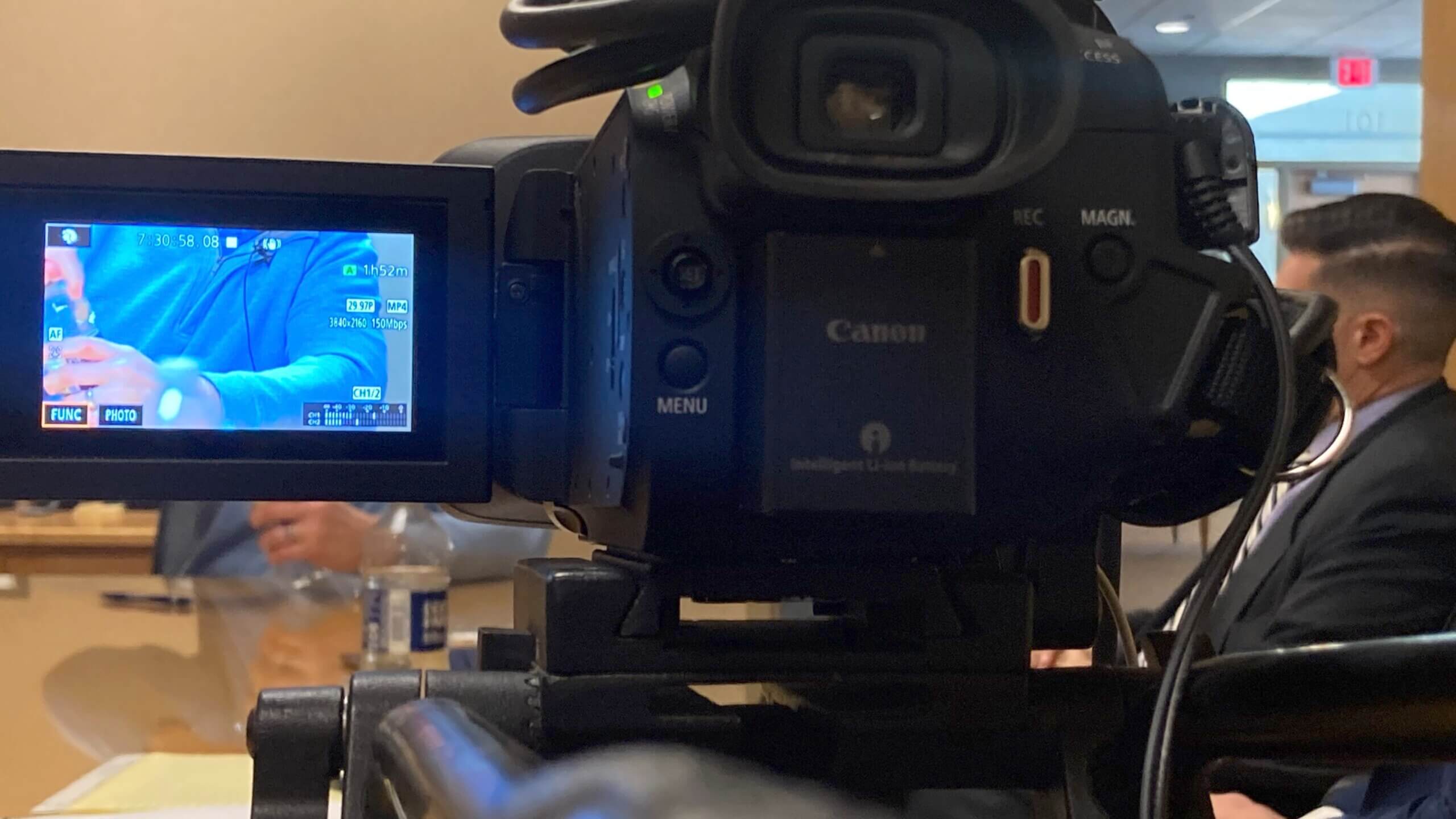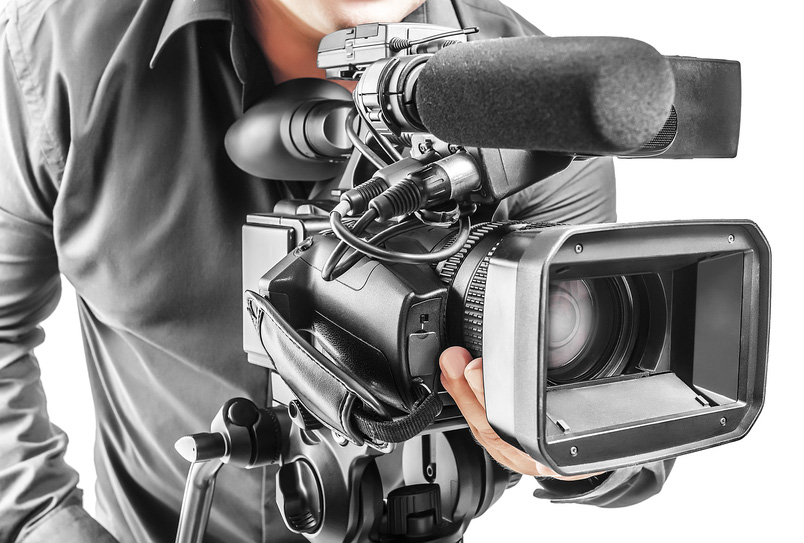Top Benefits of Professional Legal Videography for Lawsuit
Top Benefits of Professional Legal Videography for Lawsuit
Blog Article
Exploring the Devices of Lawful Videography: Introduction Its Operation in Safeguarding Authentic Aesthetic Statement for Judicial Process
In the world of judicial process, the duty of legal videography stands as a foundation in maintaining and providing aesthetic evidence. As innovation continues to advance, the systems behind legal videography have come to be progressively elaborate, providing a vital layer of authenticity to statements recorded on video clip.
Historical Evolution of Lawful Videography
Examining the historical development of legal videography exposes a substantial makeover in the recording and presentation of aesthetic evidence within the legal landscape. In the past, lawful process heavily depended on written records and photographs to record events and provide evidence. With the development of video innovation, the legal sector witnessed a standard shift in exactly how visual testament was recorded and provided.
The evolution of lawful videography can be traced back to the late 20th century when innovations in video clip recording tools made it more obtainable for use in court rooms. This technological advancement not only boosted the accuracy and dependability of visual evidence but also changed the means instances existed to juries and courts (Legal Videography). Attorneys started to acknowledge the influential power of video clip recordings in communicating feelings, subtleties, and non-verbal cues that composed pictures or transcripts alone can not capture successfully

Innovation Innovations in Video Clip Documentation
What essential technical developments have transformed video documentation in the lawful area? The lawful area has actually seen significant improvements in video documents innovation that have actually improved the authenticity and reliability of visual evidence in judicial proceedings.
In addition, advancements in video encryption and watermarking innovations have actually reinforced the safety and security and tamper-proof nature of video clip evidence, safeguarding it against unapproved changes or meddling. Moreover, the development of cloud storage space options and remote gain access to capabilities has streamlined the storage, access, and sharing of video clip evidence, helping with smooth partnership amongst lawyers and ensuring efficient access to vital visual testimonies when needed. These technical innovations in video documents have actually unquestionably transformed the legal field, improving the accuracy, integrity, and admissibility of visual evidence in judicial proceedings.
Duty of Legal Videographers in Courtroom Setups
The advancement of video documentation innovation in the legal area has actually demanded a vital duty for lawful videographers in courtroom setups, making sure the stability and dependability of visual testimonies offered during judicial proceedings. Lawful videographers play an essential role in capturing and preserving accurate aesthetic evidence that can be pivotal in lawsuit. Their obligation encompasses establishing devices, taping proceedings, and generating high-grade video clips that precisely show the events in the court room.
In courtroom setups, lawful videographers need to comply with stringent standards and requirements to preserve the authenticity of the aesthetic record. They must have a keen eye for information and a complete understanding of lawful treatments to make sure that the footage they capture is a true representation of the occasions that transpired. Additionally, lawful videographers usually function closely with legal teams to ensure that the video evidence straightens with the instance's demands and can be successfully provided in court to sustain the lawful arguments being made. Generally, the function of legal videographers in court setups is crucial in maintaining the principles of justice and making certain the transparency of lawful procedures.

Ensuring Admissibility and Honesty of Video Evidence
To keep the credibility of visual evidence offered in legal procedures, making sure the admissibility and stability of video clip evidence is an essential responsibility for lawful videographers. Admissibility refers to the approval of proof by the court, and for video proof to be acceptable, it has to fulfill certain standards. Lawful videographers play an important role in making sure that the videos they capture follow the regulations of proof, such as credibility, integrity, and relevance.
Honesty of video proof involves maintaining the creativity and accuracy of the video footage from the moment it is taped up until it is presented in court. This consists of safely keeping the video data, recording the chain of custodianship, and avoiding any type of tampering or alterations. Legal videographers should abide by stringent procedures to guarantee the integrity of the video proof and prevent any challenges to its authenticity.
Future Trends in Legal Videography
Given the increasing dependence on innovation in lawful procedures, lawful videographers are positioned to embrace innovative innovations forming the future of aesthetic testament capture and discussion. Among the famous fads on the horizon is the integration of virtual fact (VR) and boosted fact (AR) modern technologies into legal videography. These modern technologies have the prospective to transform exactly how aesthetic evidence exists in court rooms, enabling discretionary to submerse themselves in the scene of the crime or event.
Moreover, using expert system (AI) formulas for video clip analysis is important source expected to enhance the procedure of assessing and analyzing big quantities of video footage. AI can help in recognizing key moments, abnormalities, and patterns within video clips, boosting the performance of legal investigations.

Conclusion
To conclude, lawful videography has played a crucial function in providing genuine aesthetic proof for judicial proceedings. Through technical developments and the know-how of lawful videographers, the stability and admissibility of video clip proof are guaranteed in courtroom settings. As legal videography remains to develop, it will certainly be vital to maintain requirements that keep the accuracy and reliability of aesthetic testimony for the future of legal proceedings.
Checking out the historic development of legal videography exposes a substantial change in the capturing and discussion of visual proof within the lawful landscape.The development of video paperwork innovation in the find lawful field has required a critical role for lawful videographers in court room settings, ensuring the honesty and reliability of aesthetic statements offered find more info throughout judicial procedures. In addition, legal videographers frequently function carefully with lawful teams to guarantee that the video evidence lines up with the situation's requirements and can be effectively offered in court to support the legal debates being made.To maintain the reliability of visual proof offered in lawful procedures, ensuring the admissibility and stability of video proof is a crucial responsibility for legal videographers. As legal videography continues to advance, it will certainly be necessary to maintain standards that preserve the precision and reliability of aesthetic statement for the future of legal process.
Report this page